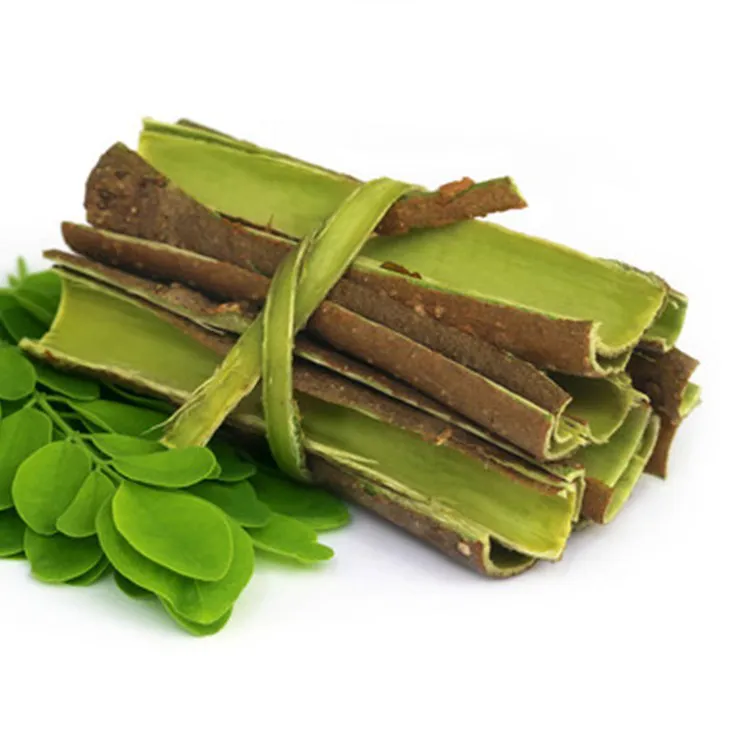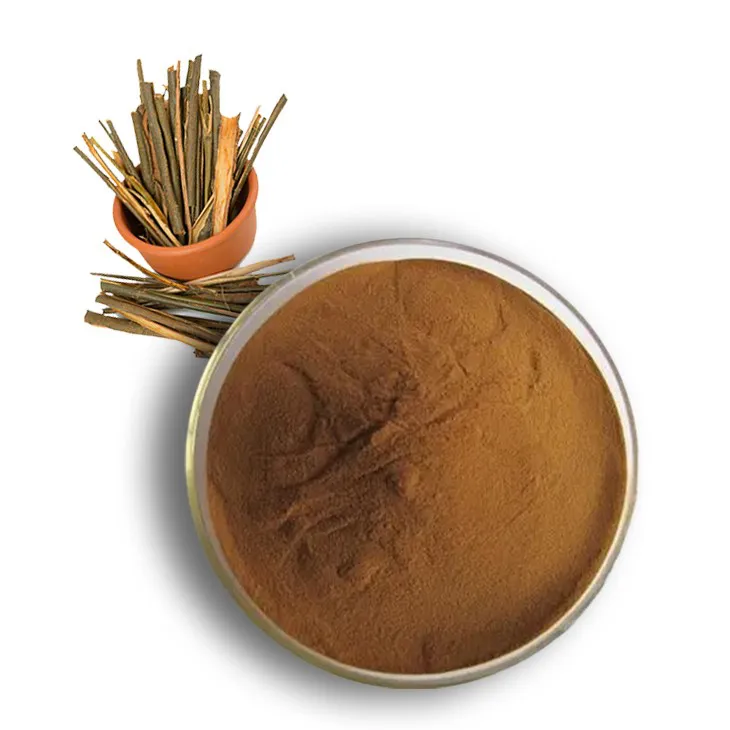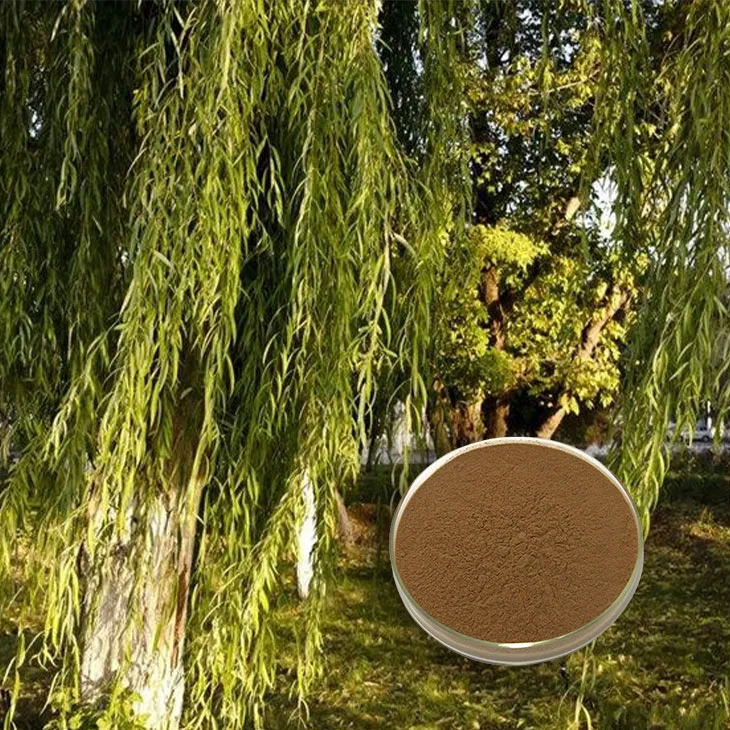- 0086-571-85302990
- sales@greenskybio.com
Manufacturer of Organic White Willow Bark Extract Powder.
2024-11-29

1. Introduction to Organic White Willow Bark Extract Powder Manufacturing
The manufacturing of organic White Willow Bark Extract powder is an intricate and captivating field. Manufacturers in this domain play a crucial role in producing a product that holds numerous potential benefits. This natural extract has been drawing increasing attention in recent years, both in the traditional medicine sphere and in modern health - related industries.

2. Understanding the White Willow Bark
White willow bark has a rich history in traditional medicine. For centuries, it has been used by different cultures around the world for various health - related purposes. Manufacturers need to have an in - depth understanding of this plant as it forms the basis of their product.
The chemical composition of white willow bark is complex. It contains salicin, which is the main active ingredient. This compound is related to aspirin in terms of its pharmacological properties. However, the natural form in white willow bark may offer some unique advantages compared to synthetic aspirin.

3. Managing the Supply Chain
3.1 Cultivation and Wild - Harvesting
The supply chain management for organic White Willow Bark Extract powder manufacturers begins with the procurement of the raw material - white willow bark. This can be achieved through either cultivation or wild - harvesting.
In the case of cultivation, manufacturers need to ensure that the growing conditions are optimal for the white willow trees. This includes factors such as soil quality, water availability, and sunlight exposure. Organic farming practices must be strictly adhered to. For example, the use of chemical fertilizers and pesticides is prohibited.
When it comes to wild - harvesting, sustainability is of utmost importance. Manufacturers need to work with suppliers who follow ethical and sustainable wild - harvesting practices. This means not over - harvesting from a particular area and ensuring the long - term survival of the white willow trees in their natural habitats.
3.2 Processing and Packaging
After the white willow bark is obtained, it goes through a series of processing steps to be transformed into extract powder. The bark needs to be cleaned thoroughly to remove any impurities such as dirt, debris, and other foreign materials.
Next is the extraction process, which will be further elaborated in the following section. Once the extract is obtained, it is dried and then ground into a fine powder.
Packaging is also a critical part of the supply chain. The packaging materials need to be selected carefully to ensure the stability and quality of the product. It should protect the powder from moisture, light, and air, which can all degrade the quality of the extract powder over time.

4. Optimization of the Extraction Process
Manufacturers are constantly striving to optimize the extraction process of white willow bark. The goal is to obtain the maximum yield of active components while minimizing energy consumption and reducing environmental impact.
There are different extraction methods available, such as solvent extraction and supercritical fluid extraction. Solvent extraction is more commonly used, where solvents like ethanol or water are used to extract the active ingredients from the white willow bark. However, manufacturers need to be careful in choosing the solvent as it can affect the quality of the final product.
Supercritical fluid extraction, on the other hand, is a more advanced and environmentally friendly method. It uses supercritical carbon dioxide as the extraction solvent. This method can produce a higher - quality extract with a more pure profile of active components. However, it also requires more sophisticated equipment and higher investment.
In addition to choosing the right extraction method, manufacturers also need to optimize the extraction parameters. This includes factors such as temperature, pressure, and extraction time. By carefully adjusting these parameters, they can improve the efficiency of the extraction process and obtain a better - quality product.

5. Quality Assurance
Quality assurance is a cornerstone for organic white willow bark extract powder manufacturers. They are required to comply with a variety of international and national regulations regarding organic products.
Firstly, the quality of the extract powder itself needs to be carefully monitored. This includes testing for the purity of the active ingredients, such as salicin content. The powder should also be free from contaminants such as heavy metals, pesticides residues, and microbial contaminants.
Secondly, proper labeling and documentation are essential. Manufacturers need to clearly label the product with information about its origin, composition, and potential uses. This helps consumers make informed decisions when purchasing the product. Documentation also needs to be in place to prove that the product meets the required organic standards. This may include certificates of organic farming, extraction processes, and quality control.
6. Promoting the Product
Manufacturers are not only responsible for producing high - quality organic white willow bark extract powder but also for promoting the awareness of its benefits.
They collaborate with different industries, such as the nutraceuticals industry and the herbal medicine industry. In the nutraceuticals industry, the extract powder can be used as an ingredient in dietary supplements. Manufacturers can work with supplement companies to develop products that target specific health concerns, such as pain relief or anti - inflammatory effects.
In the herbal medicine industry, white willow bark extract powder has a long - standing history of use. Manufacturers can partner with herbal medicine practitioners and companies to promote the traditional uses of the product and explore new applications based on modern scientific research.
Marketing strategies also play an important role in promoting the product. This can include online marketing, participation in trade shows, and providing educational resources to consumers. By increasing the awareness of the product, manufacturers can expand the market for organic white willow bark extract powder and make it more accessible to a wider range of consumers.
7. Conclusion
The manufacturing of organic white willow bark extract powder is a multi - faceted process that involves understanding the plant, managing the supply chain, optimizing extraction, ensuring quality, and promoting the product. Manufacturers in this field face various challenges but also have the opportunity to contribute to the growing demand for natural and organic health products. As the market for natural remedies continues to expand, the role of these manufacturers will become even more important in providing high - quality, sustainable, and effective organic white willow bark extract powder.
FAQ:
What are the main steps in the manufacturing process of organic white willow bark extract powder?
The main steps include starting with a good understanding of the white willow bark. Then, managing the supply chain which involves the organic and sustainable cultivation or wild - harvesting of white willow trees, followed by the extraction process where they aim to optimize it in terms of energy consumption and yield of active components. Finally, there is the packaging stage. Throughout the process, quality assurance measures are also in place.
How do manufacturers ensure the quality of organic white willow bark extract powder?
Manufacturers ensure the quality by complying with international and national regulations for organic products. This includes ensuring the quality of the extract powder itself, as well as proper labeling and documentation. The labeling and documentation should inform consumers about the product's origin, composition, and potential uses.
What is the role of manufacturers in promoting organic white willow bark extract powder?
Manufacturers play a role in promoting the awareness of the benefits of this extract powder. They collaborate with industries like nutraceuticals and herbal medicine to expand the market. This helps make the natural product more accessible to a wider range of consumers.
Why is efficient supply chain management important for manufacturers of organic white willow bark extract powder?
Efficient supply chain management is important because it covers everything from the source of the white willow bark (either through cultivation or wild - harvesting in an organic and sustainable way) to the final packaged product. It ensures a smooth flow of production, helps in maintaining the quality of the raw material, and can also have an impact on the cost - effectiveness of the manufacturing process.
How do manufacturers optimize the extraction process of organic white willow bark extract powder?
Manufacturers optimize the extraction process by constantly exploring ways to reduce energy consumption during extraction while maximizing the yield of active components. This may involve using advanced extraction techniques and technologies, as well as carefully controlling the extraction parameters such as temperature, pressure, and solvent used.
Related literature
- Organic White Willow Bark Extract: Properties and Applications"
- "Manufacturing Standards for Organic Botanical Extracts: The Case of White Willow Bark"
- "The Role of White Willow Bark in Organic Extract Powder Production"
- ▶ Hesperidin
- ▶ citrus bioflavonoids
- ▶ plant extract
- ▶ lycopene
- ▶ Diosmin
- ▶ Grape seed extract
- ▶ Sea buckthorn Juice Powder
- ▶ Beetroot powder
- ▶ Hops Extract
- ▶ Artichoke Extract
- ▶ Reishi mushroom extract
- ▶ Astaxanthin
- ▶ Green Tea Extract
- ▶ Curcumin Extract
- ▶ Horse Chestnut Extract
- ▶ Other Problems
- ▶ Boswellia Serrata Extract
- ▶ Resveratrol Extract
- ▶ Marigold Extract
- ▶ Grape Leaf Extract
- ▶ blog3
- ▶ blog4
-
The best organic cocoa extract.
2024-11-29
-
Organic Non - GMO Camu - Camu Fruit Extract.
2024-11-29
-
Nature's Bounty Copaiba Extract.
2024-11-29
-
The pure L - carnitine most worth buying.
2024-11-29
-
The best organic quercetin.
2024-11-29
-
Nature's Bounty Vitamin K2
2024-11-29
-
Andrographis Paniculata Extract Powder
2024-11-29
-
Lotus leaf extract
2024-11-29
-
Chasteberry Extract
2024-11-29
-
Curcuma Longa Extract/Turmeric extract
2024-11-29
-
Hawthorn Extract
2024-11-29
-
Fig Extract
2024-11-29
-
Acerola Extract
2024-11-29
-
Medicinal Marshmallow Extract
2024-11-29
-
Panax Ginseng Leaf Extract
2024-11-29
-
Citrus bioflavonoids
2024-11-29





















